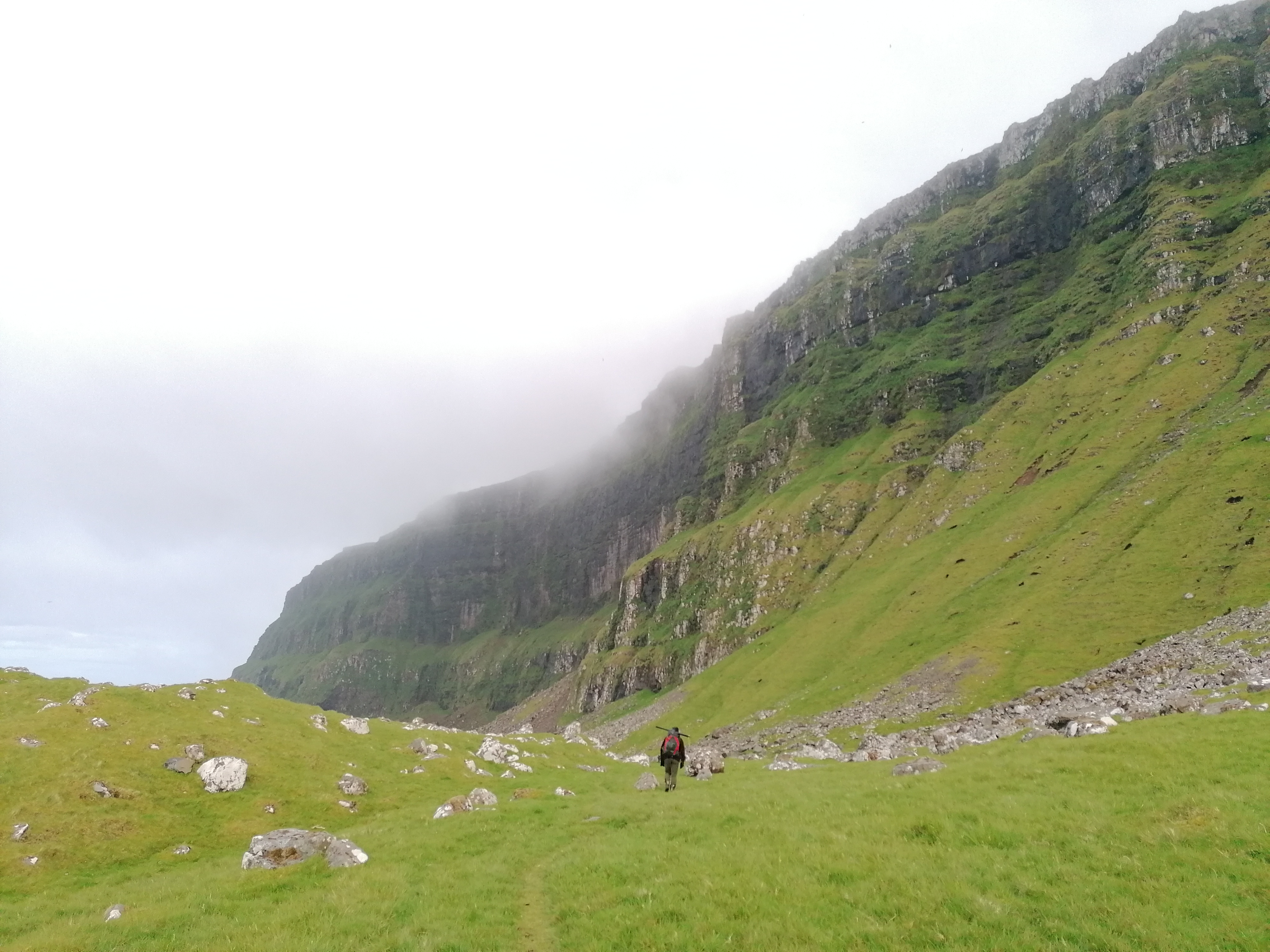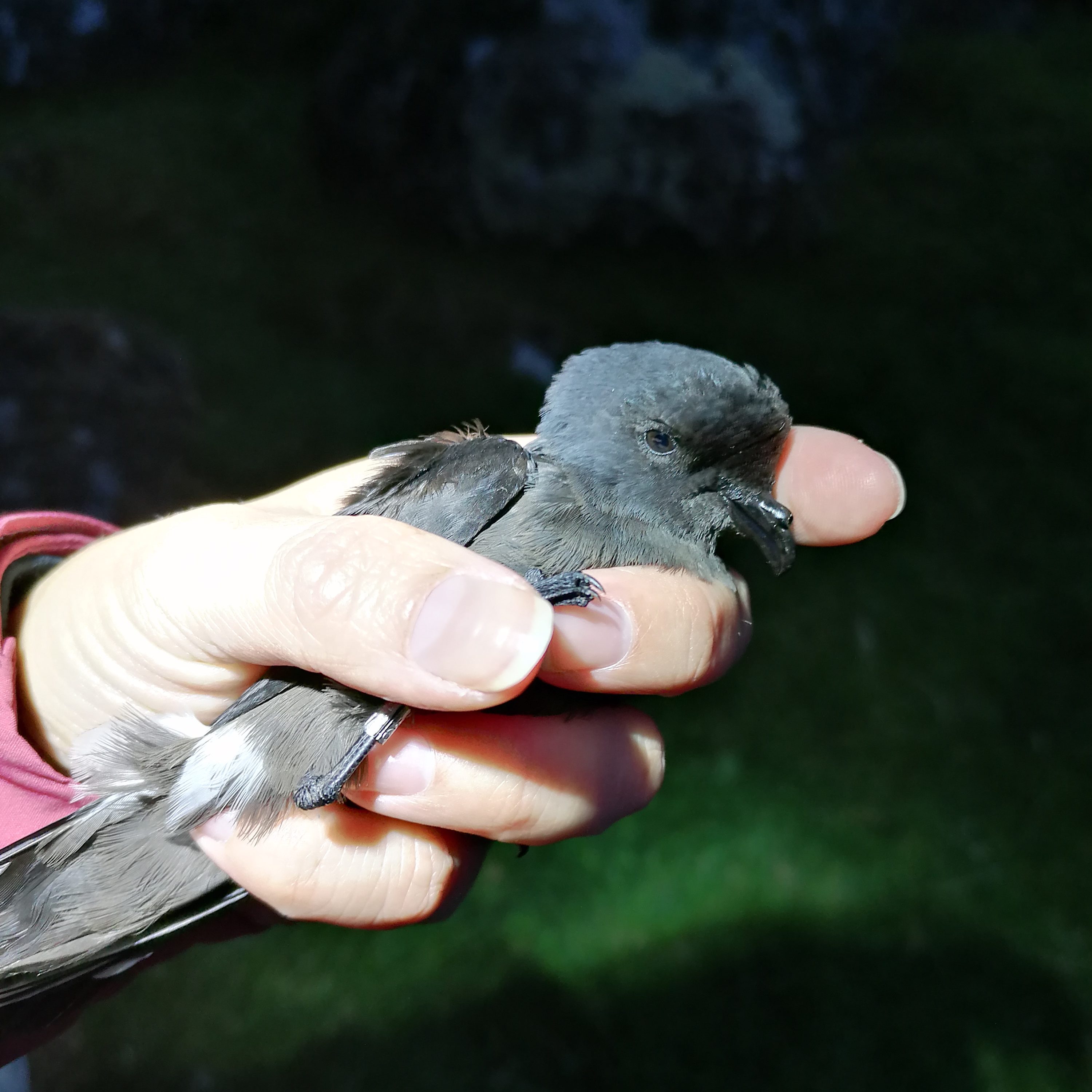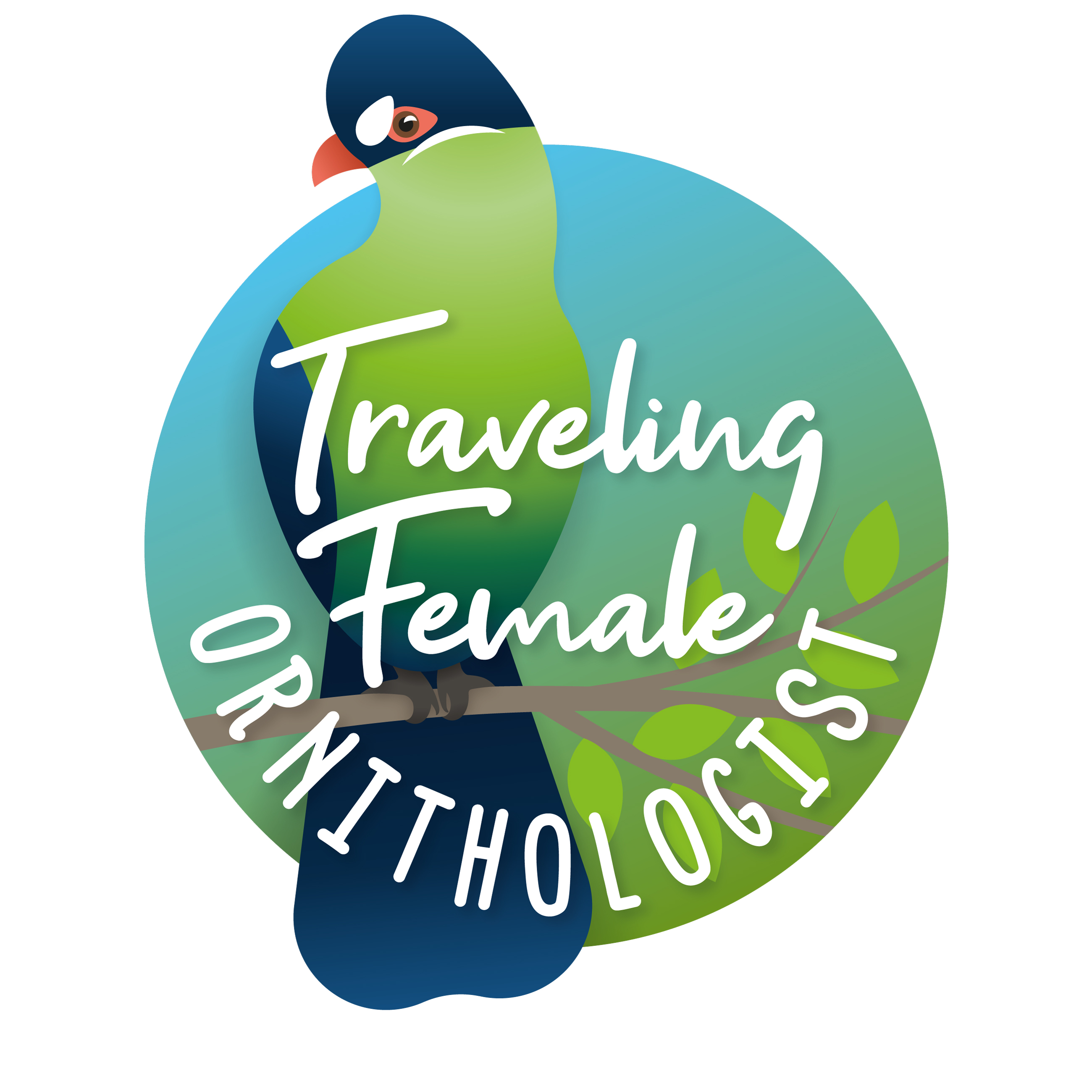Exploring the Enchanting Island of Nólsoy in the Faroe Islands
Nestled just 20 minutes away from Tórshavn, the capital of the Faroe Islands, lies the small and captivating island of Nólsoy. During my visit in June 2022, I had the opportunity to spend two unforgettable nights on this charming island, immersing myself in its unique beauty and fascinating wildlife.
Table of contents
- Exploring the Enchanting Island of Nólsoy in the Faroe Islands
- Seabirds on Nólsoy – an internationally recognized bird paradise
- The Fascinating Faroese Storm Petrel
- Ringing seabirds at a breeding colony: When darkness falls, the creatures appear
- Seeing puffins on Nólsoy
- Hiking on Nólsoy during summer
- What is the hiking level on Nólsoy?
- The weather on the Faroe Islands during Summer
- Planning Your Visit to Nólsoy
- Lessons learned on visiting Nólsoy and the Faroe Islands

First Impressions and Adventurous Encounters
Upon arrival, I was greeted by Jógvan, a knowledgeable local resident who has spent most of his life on Nólsoy. Jógvan, a coordinator of the Faroese storm petrel ringing, radiated enthusiasm as he shared his incredible research and experiences with this mysterious and often misunderstood seabird. In fact, Jógvan recently published a remarkable book documenting his findings on these elusive creatures.
Hiking to Stongin, north of Nólsoy bygd
One of the highlights of my trip was a hike to the northern part of Nólsoy called Stongin, where I witnessed the island’s wild and untamed nature.
Despite facing strong winds of 10-11 m/s, I ventured forth and was rewarded with breathtaking panoramas. Along the way, I encountered the charismatic national bird of the Faroe Islands, the oystercatcher (known as ‘Tjaldur’ in Faroese). These birds filled the air with their distinctive calls, adding a touch of liveliness to the already enchanting surroundings. Additionally, I had the chance to observe a breeding colony of arctic terns, although it’s important to note that they are protected behind a fence for their safety.

Seabirds on Nólsoy – an internationally recognized bird paradise
Nólsoy was appointed an Important Bird Area (IBA) by BirdLife International in the year 2000. The IBA meets four criteria and holds internationally important seabird colonies with an estimated abundance of ca. 90,000 breeding pairs of seabird (BirdLife International, 2023).
The last breeding bird census according to BirdLife International was in 1989, stating the following breeding bird population of Nólsoy;
- Storm petrel: 50,000 pairs
- Atlantic puffin: 30,000 pairs
- Black guillemot: 100 pairs
For a recent account of birds on the Faroe Islands, head to ebird.org where birders register observations.
The Fascinating Faroese Storm Petrel
While exploring Nólsoy, I learned more about the captivating presence of the Faroese storm petrel. Often mistaken for pigeons due to their small size, these seabirds spend the majority of their lives at sea, only coming to land when they are ready to breed.
Every June, mature breeding individuals return to Nólsoy and reunite with their long-term partners in the dark recesses of rock crevices. As nocturnal creatures, they remain hidden during the day, venturing out exclusively under the cover of darkness.
Storm petrels are truly remarkable. They navigate the vast open seas, feeding on small crustaceans, and are known for their resilience. In fact, it has been documented through extensive bird ringing efforts that storm petrels can live up to an astonishing 34 years, a testament to their ability to withstand the harsh and unpredictable conditions of the ocean. Nolsóy, with its high storm petrel population, proudly holds the distinction of being home to the largest concentration of these extraordinary birds in the world.

European storm petrel. Photo by Richard Crossley, via Wikimedia Commons
Ringing seabirds at a breeding colony: When darkness falls, the creatures appear
The main reason for me to visit the Faroe Islands that summer was to assist Jógvan with ringing Faroese storm petrels on Nólsoy. I was lucky that the weather played out nicely giving us two nights in a row for catching birds.
The continuous efforts by researchers on Nólsoy have resulted in this publication with all the latest scientific results of the storm petrels, which are collected during the breeding season and in coordination with the ringing. Therein, a new population estimate was made of the Faroese storm petrel, stating that the population is now 200,000-250,000 birds.
The long walk to the seabird colony
Around nine-thirty in the evening, Jógvan and I headed towards the breeding colony through the lush green meadows (see photo below). After what I estimated to be app. one hour of slowly and carefully making our way across slippery rocks as the twilight slowly crept in, we arrived at the Atlantic puffin seabird colony.
As we were walking, some puffins were already flying above us towards the cliff, having spent their day at sea feeding on sandeel. Storm petrels were making little noises from underground in their nests, it sounded a little like a mix between purring and mouse-noises.


Setting up the nets and preparing for the storm petrels
We put up a single mist net (a special mesh-net created purposely for bird ringing and exist in many size and types). While we waited a little further for the darkness, we had coffee and chocolate to regain som energy.
When dusk had settled, the first little dark creatures with swallow-like fluttering flight were appearing out of what seemed like nowhere.
The storm petrels (not swallows!) were entering land from the sea, returning to their mates. Storm petrels usually return to the exact same rocks to breed in the crevices! A good reason why you should never step in between to rocks, as you will probably fall a little.
It was only pitch dark for one hour in the night since we were approaching equinox. During that hour we managed to catch, read and ring a total of 32 birds. The storm petrels were beautiful little seabirds, delicately built (but greasy with regurgitated, smelly krill oil!), with their tiny black feet with webbed toes.
On the second night we put up two nets, catching a little more than double the amount of birds – a total of 73 birds on the second night.

A new age-record was made during my short visit
Two very interesting recaptures of storm petrels were made:
- 22 years ago a storm petrel was caught and given (ringed) a metal ring with a unique number identification by Jens-Kjeld, where the bird it was aged to be 1 year or older. In June 2022 Jógvan and I recaptured the exact same bird less than 100 meters from the place it was originally caught in 2022! This gives you an idea of how steadfast the birds are to their breeding grounds.
- The best recapture we made was of a storm petrel which was ringed in August 1996 in Norway (!!) app. 1000 km away from Nólsoy! It was not the first recapture of a bird from Norway, but it was the oldest record of a storm petrel caught on Nólsoy – 27 years or older!
The field of ringing is still advancing
It is incredible that ringing has showed us how old birds can get in the wild, and the ways they move and migrate. Today GPS-tagging and satellite tagging are giving us more and more precise data on birds and their movement patterns. It is one of the scientific fields within Ornithology which captivates me the most.
On the photo above, you can see how small the storm petrel is (they fit right in my hand!). The individual below shows a shiny new metal ring, and was not one of the recaptured birds. Some of the data we collected included sexing the birds, measuring the wing length and looking for brood patches.
Seeing puffins on Nólsoy
You can’t go to the Faroe Islands in summer without seeing an Atlantic puffin. They are charismatic little black-and white birds with the colorful bill and large orange feet. As mentioned, they are abundant on Nólsoy and breed along the cliffs mainly on the eastern side of the island where they nest in burrows that are dug underground.

When I went to the seabird colony on the east coast near Eggjarklettur to help ringing storm petrels, we witnessed thousands of puffins returning to the cliffs. The light was fading slowly but the air was filled with puffins as they more or less clumsily assembled on the rocks. It would not have been possible to see them without a pair of binoculars, a good zoom camera or a telescope.
Where to look for puffins on Nólsoy
Read more about where to find the best places for puffin spotting on Northtrotter.com

Photo of an Atlantic puffin with a bill full of lesser sandeels. Photo credits: Charles J. Sharp via Wikimedia Commons
Hiking on Nólsoy during summer
There is only one official hiking trail on Nólsoy, which is a marked trail with a maintained path (basically follow the rock cairns!). The trail leads all the way to the lighthouse on the southern most tip of Nólsoy along lush green meadows with an ocean view. If you download all the offline maps of the Faroe Islands on the app Maps.me you will have access to the trail location as a backup. If you have a good mobile provider you will have mobile internet most of the time.

What is the hiking level on Nólsoy?
Except from the very steep and quite challenging ascend just at the beginning of the trail, it is a very easy level trail. The trail on Nólsoy is not a round-trip, but a one way trail all the way south to the lighthouse.
The Faroe Islands is a place where you will be happy to bring your hiking poles with you to add stability!
There are plenty of places where you can replenish your thirst in fresh mountain streams. Make sure you bring your sturdy boots to protect your angles, and bring enough food as you will need at least a snack for all your hard work.

Here below you can see a topography map of Nólsoy with all the Faroese names, and the image was available from the tourist site.

The weather on the Faroe Islands during Summer
As described in my post about My Four Days on the Faroe Islands, I experienced an array of summer variations during my short time there. I had a really nice and warm weather on this hike, but the day before we had gusts of 10-11 m/s and rain.
Always be prepared for any situation in the Faroe Islands. The weather is unstable, and the situation can thus change quite fast. There are not really any places to seek shelter on the hiking trail on Nólsoy, so be sure you have your raincoat or shell jacket with you as a minimum.
Planning Your Visit to Nólsoy
Whether you’re interested in a day trip or wish to extend your stay, Nólsoy offers a unique and rewarding experience in the Faroe Islands. Here are some practical tips to help you plan your visit:
How to Get to Nólsoy and where to Stay
The journey to Nólsoy is both convenient and flexible. On weekdays, there are multiple scheduled ferry rides from Tórshavn to Nólsoy, ensuring easy accessibility. Even in the summer months, adverse weather conditions rarely lead to ferry cancellations, making it an ideal option for transportation. You can find the ferry schedule on the official website, see the link below.
Ferry connection schedule Nólsoy-Tórshavn

If you prefer to stay for a little longer than a day, Nólsoy provides various accommodation options.
From charming rooms to cozy apartments, you can find a place to suit your needs. The local tourism office can assist you in finding the perfect spot to make your stay on the island comfortable and enjoyable. Additionally, Nólsoy offers a small grocery store for any necessary supplies and a delightful restaurant/sports bar called Maggie’s, where you can indulge in delicious fish and chips for a satisfying meal.
Lessons learned on visiting Nólsoy and the Faroe Islands
I learned that the inhabitants may own ‘a share’ of the grasslands for their sheep to graze, just like owning a stock/share in a company. If you see people crossing the fence, these may be the owners, but strangers are not allowed to do the same unless you have an agreement with the owners.
Visiting Nólsoy on the Faroe Islands was an experience that left an indelible mark on my heart. The island’s mostly untouched landscapes, vibrant avian communities, and the captivating presence of the Faroese storm petrels made this journey truly exceptional.
Whether you’re a nature enthusiast, an avid hiker, or simply seeking a tranquil retreat, Nólsoy is a hidden gem waiting to be visited.
-Traveling Female Ornithologist
*None of the mentioned places or experiences in this post were sponsored.
© All photos are my own unless stated otherwise and may not be used without permission.
References:
BirdLife International (2023) Important Bird Area factsheet: Nólsoy. Downloaded from http://datazone.birdlife.org/site/factsheet/nólsoy-iba-faroe-islands-(to-denmark) on 02/10/2023.

